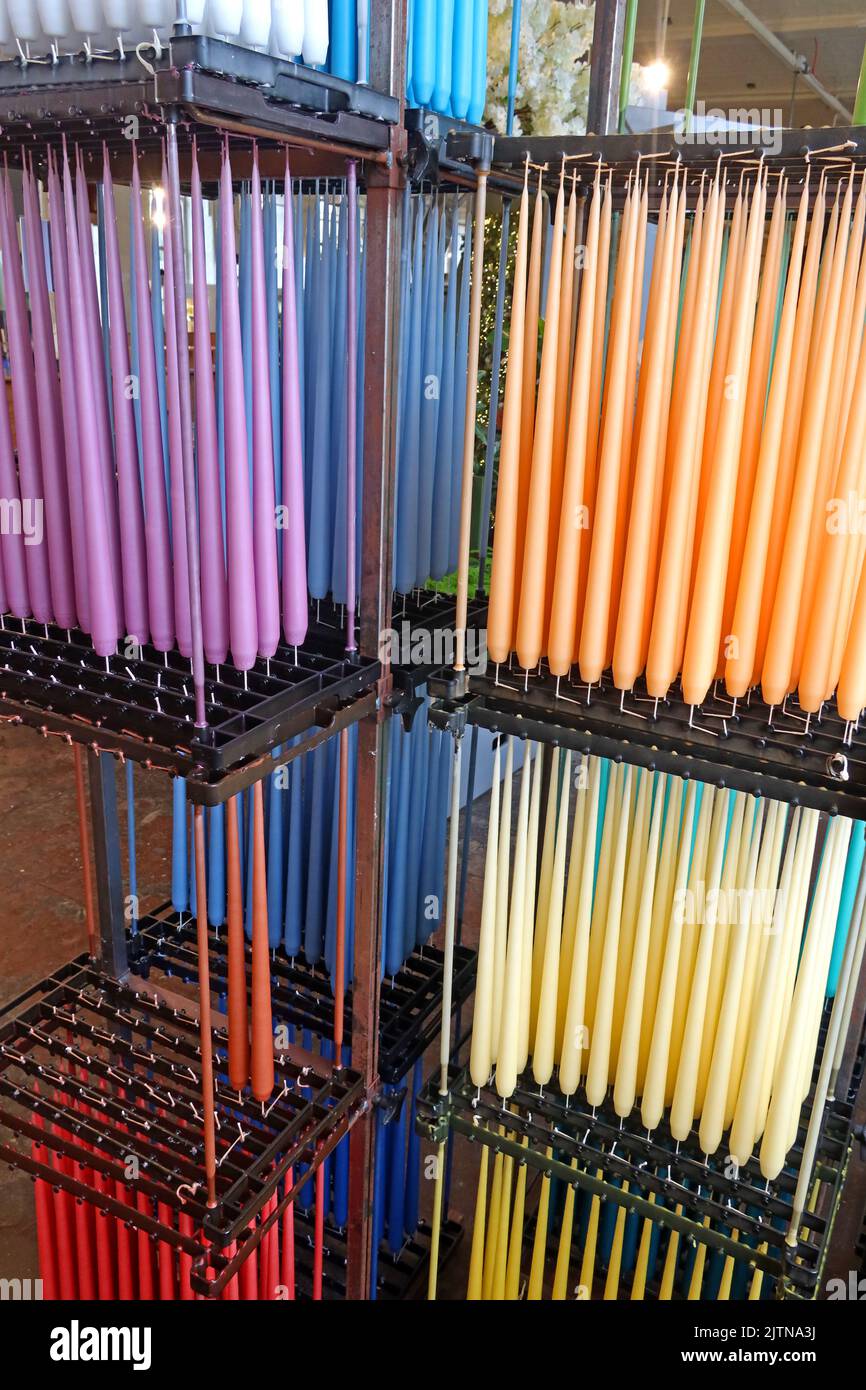Hand dipped wick candles, made from natural wax

Image details
Contributor:
Tony Smith / Alamy Stock PhotoImage ID:
2JTNA3JFile size:
57.1 MB (2 MB Compressed download)Releases:
Model - no | Property - noDo I need a release?Dimensions:
3648 x 5472 px | 30.9 x 46.3 cm | 12.2 x 18.2 inches | 300dpiDate taken:
27 August 2022Location:
Saltaire village,Bradford,West Yorkshire,England, UKMore information:
Candle making was developed independently in many places throughout history. Dipped candles made from tallow were made by the Romans beginning about 1000 BCE. Evidence for candles made from whale fat in China dates back to the Qin Dynasty (221–206 BCE). In India, wax from boiling cinnamon was used for temple candles. Candles were primarily made from tallow and beeswax in ancient times[when?], but have been made from spermaceti (from sperm whales), purified animal fats (stearin), and paraffin wax in recent centuries The manufacture of candles became an industrialised mass market in the mid 19th century. In 1834, Joseph Morgan, a pewterer from Manchester, England, patented a machine that revolutionised candle making. It allowed for continuous production of molded candles by using a cylinder with a moveable piston to eject candles as they solidified. This more efficient mechanized production produced about 1, 500 candles per hour, (according to his patent, "with three men and five boys [the machine] will manufacture two tons of candle in twelve hours"). This allowed candles to become an easily affordable commodity for the masses In 1848 James Young established the world's first oil refinery at the Alfreton Ironworks in Riddings, Derbyshire. Two paraffin wax candles were made from the naturally occurring paraffin wax present in the oil and these candles illuminated a lecture at the Royal Institution by Lyon Playfair. In the mid-1850s, James Young succeeded in distilling paraffin wax from coal and oil shales at Bathgate in West Lothian and developed a commercially viable method of production. The Paraffin wax was processed by distilling residue left after crude petroleum was refined. By the late 19th century, Price's Candles, based in London was the largest candle manufacturer in the world